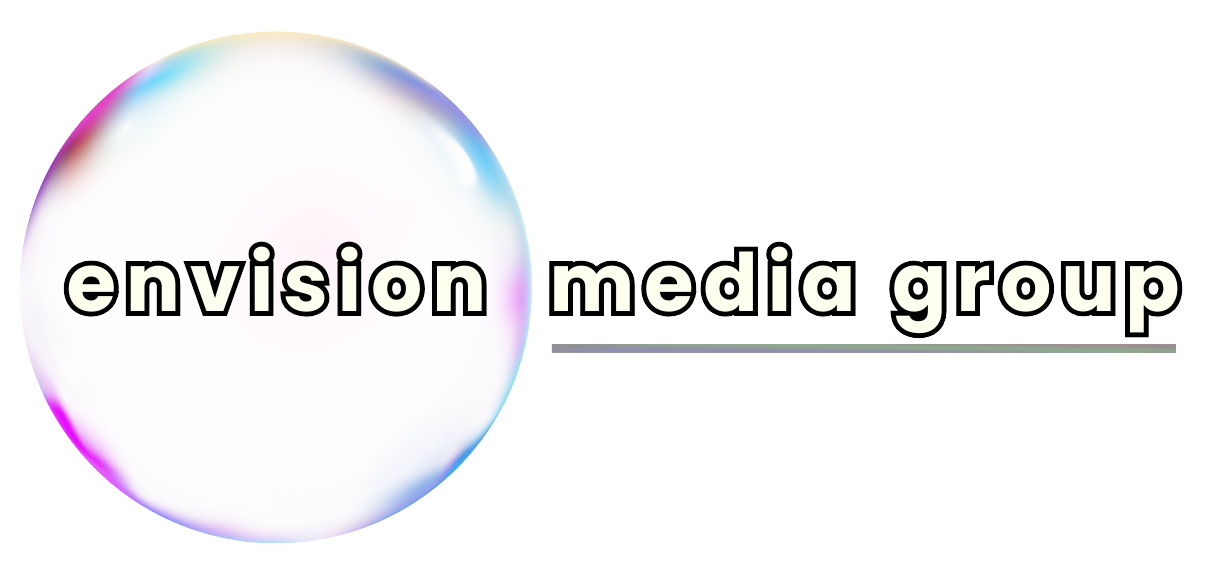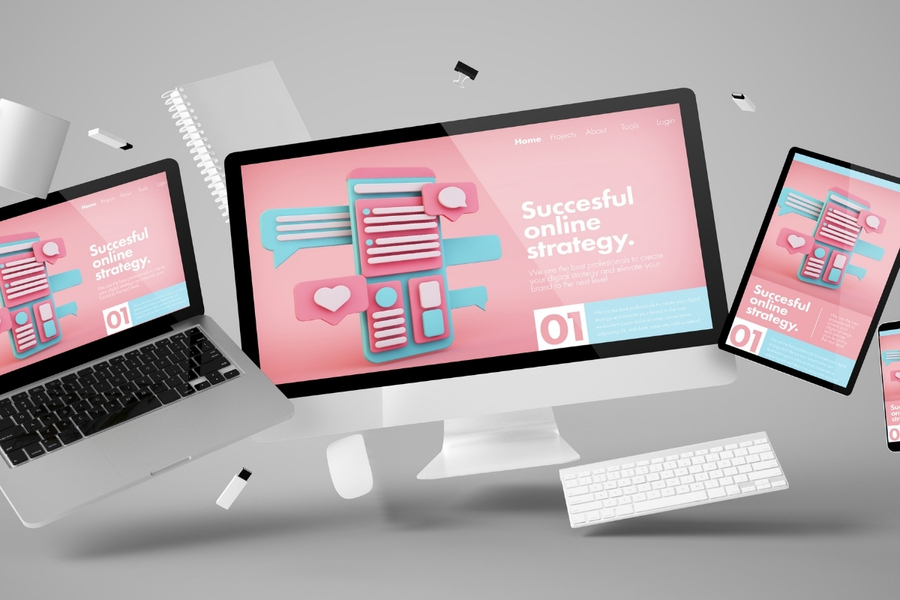When it comes to building a strong online presence, web design branding is one of the most important elements you can invest in. It’s not just about how your site looks—it’s about how it makes people feel, what it communicates, and how well it reflects your company’s identity. When you’re looking for an expert web design company, take a look at their portfolio and ensure they’re branding experts.
Table of Contents
ToggleWhat Is Branding in Web Design?
Branding in web design is the strategic use of visuals, messaging, and user experience to represent your company online. It includes everything from your logo and color palette to your fonts, images, voice, and tone.
A lot of people think branding just means having a good logo. It doesn’t. A logo is a single piece of the puzzle. True branding shows up across every element of your site—how you speak to users, what colors you use, how your buttons look, and what kind of images you choose.
Consistency across all digital touchpoints builds trust. When your website, social media, packaging, and even your email footers feel like one cohesive brand, it creates familiarity—and familiarity builds loyalty.
Core Branding Elements That Shape Your Website
Company Mission and Values
Your website should instantly reflect what your brand stands for. Are you modern and forward-thinking? Warm and community-focused? Luxury and exclusive?
Translating your values into visual and written elements helps you connect with your ideal audience. When your site feels aligned with your mission, it builds trust from the first click.
Logo Placement and Usage
Your logo should be easy to find and clearly visible, typically in the top-left corner. Make sure it’s legible at any screen size and works well on light or dark backgrounds.
Use variations of your logo as needed—horizontal for headers, stacked for mobile, or icon-only for footers. Always make sure it’s used consistently.
Color Psychology and Brand Colors
Your color palette should evoke the right emotions. Blue often signals trust and professionalism. Green feels calm and natural. Red creates energy and urgency.
Choose a primary and secondary palette, and stick to it. Also, be mindful of accessibility—make sure your colors have enough contrast for easy readability.
Typography and Fonts
Fonts carry personality. A bold, geometric sans-serif feels modern. A classic serif font feels traditional. Choose fonts that reflect your tone and values.
Pair a strong headline font with a readable body font, and limit yourself to two or three styles max. Web-safe and Google fonts load faster, but custom fonts can give you a unique edge—just be sure they’re optimized.
Imagery and Visual Style
Great branding means avoiding random stock photos that feel generic. Use images that reflect your audience, your team, your products, or your vibe.
Maintain a consistent editing style—whether that’s moody and cinematic or clean and minimal. Don’t forget icons and illustrations—those should match your site’s overall look and feel too.
Voice and Tone
Your brand voice is how you speak to your users. Are you casual and conversational? Polished and professional? Bold and confident?
This tone should come through not just in your homepage copy, but in your microcopy too—like button labels, error messages, and contact form placeholders. Every word counts in reinforcing your brand identity.
Building Trust Through Branded Elements
Strong web design branding isn’t just about colors and fonts—it’s about creating trust. And trust comes from showing real proof that your business delivers. Here’s how to do that through the elements that matter most.
Social Proof
People trust people. When visitors see reviews, testimonials, or recognizable client logos, they feel reassured. Show off the nice things your customers say. Display Google or Yelp reviews directly on your site, and keep them fresh.
Video testimonials or case studies go even further. A short client story about how your business helped them can do more than any sales pitch ever could.
Certifications, Awards, and Media Features
Trust is built with authority. If you’ve won awards, been featured in the media, or hold relevant certifications, display them clearly—but tastefully.
The best spots? Near your homepage CTA, in your footer, or on a dedicated “As Seen In” section. Don’t let those credibility boosters go unseen.
Real People Behind the Brand
People connect with people—not faceless businesses. Add bios, real team photos, and behind-the-scenes moments. A quick intro to your founder or team builds authenticity.
Tell stories through visuals and copy. Highlight what you care about as a company. A friendly face can turn a cold brand into one people actually want to work with.
Technical Branding: How Design and UX Support the Brand
Strong web design branding doesn’t stop at colors and logos—it extends into how your site functions. A smooth, intuitive experience reinforces your brand’s professionalism and builds trust with every click.
Consistent Navigation and Layout
When users know where to find things, they feel confident. That’s why predictable navigation matters. Keep your menus in familiar places, your buttons labeled clearly, and your layout consistent from page to page.
Using layout templates is a great way to maintain visual and structural cohesion across your site. It helps your brand feel polished, not patched together.
Mobile Branding
Your website should feel just as strong on a phone as it does on a desktop. That means making sure your branding—colors, fonts, imagery—scales cleanly on smaller screens.
Every mobile user should instantly recognize your brand, without squinting or scrolling endlessly. Prioritize clarity, but don’t lose the details that make your brand feel intentional.
Branded CTAs and Buttons
Your calls-to-action are more than clickable areas—they’re branded touchpoints. The color, shape, and wording of your buttons should feel like part of your brand’s personality.
Use action-driven, brand-aligned language (“Get Your Quote” vs. “Submit”). Make sure every interaction—whether it’s a hover effect or a button click—feels like a deliberate extension of your identity.
Branding in Action: Real-World Web Design Examples
Here are a few examples of web design branding done right—where brand values, visuals, and user experience come together.
EACR Inc.
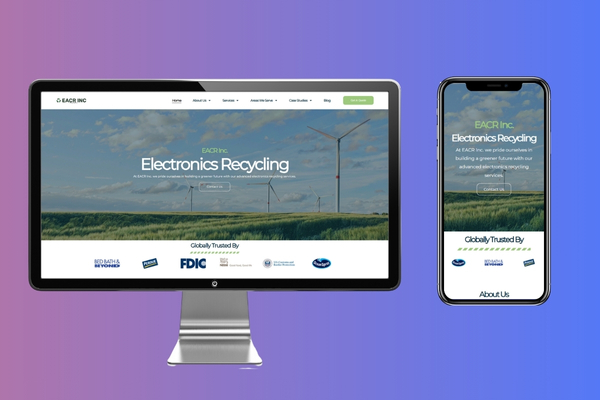
We gave this electronics recycling company a complete brand refresh—modern layout, bold blue/green color palette, and a redesigned site focused on clarity and trust. The result? A more modern, approachable brand with clear service messaging and strong SEO structure.
FDC Cleaning
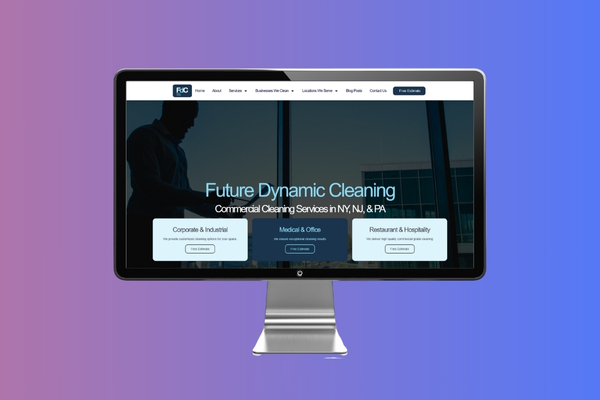
For this commercial cleaning company, we created a fresh brand identity from the ground up—clean lines, trustworthy blues and whites, and a structured layout that speaks to professionalism. Bounce rates dropped, while engagement and contact form submissions went up.
Each project started with a clear understanding of the brand—and we used every piece of the design, layout, and UX to reinforce that identity. That’s the power of smart, intentional web design branding.
Matt DeSimone Media
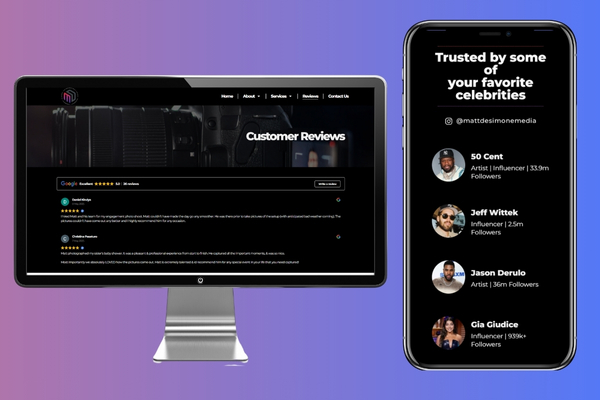
We transformed Matt DeSimone Media’s site from a basic Wix template into a bold, interactive experience. The new site leans into sleek black design with crisp white typography, giving it a high-end, cinematic feel that fits Matt’s brand perfectly. We showcased his video content front and center, integrated Google reviews, and built social proof through featured celebrity clients and video testimonials. Every element of the site reinforces his credibility and creative expertise—proving how web design branding can elevate a business in both form and function.
Final Thoughts: Don’t Design Without a Brand
Before you start designing a website, you need to know who you are as a brand. Skipping branding leads to generic, forgettable sites that don’t connect with users or convert well.
Branding is what sets you apart. It shapes how people feel about your business the second they land on your site. It builds trust, creates recognition, and drives real results—whether that’s more clicks, calls, or conversions.
Need help building a brand-focused website? Contact Envision Media Group today. We are a truly experienced web design agency located in New Jersey.
Branding is who you are—your values, visuals, and voice. Marketing is how you promote it. Branding comes first and gives your marketing purpose.
Sometimes. Minor updates like colors or fonts can be swapped in, but a full rebrand often requires a website overhaul to stay consistent and effective.
More than you’d think. Strong branding improves trust signals, keeps users on your site longer, and encourages backlinks—all of which help SEO.
Start by defining your mission, values, and target audience. Then, create a visual identity (colors, fonts, logo) that reflects that.
Yes. A style guide ensures consistency and helps your designer build a site that truly represents your brand across every page.
